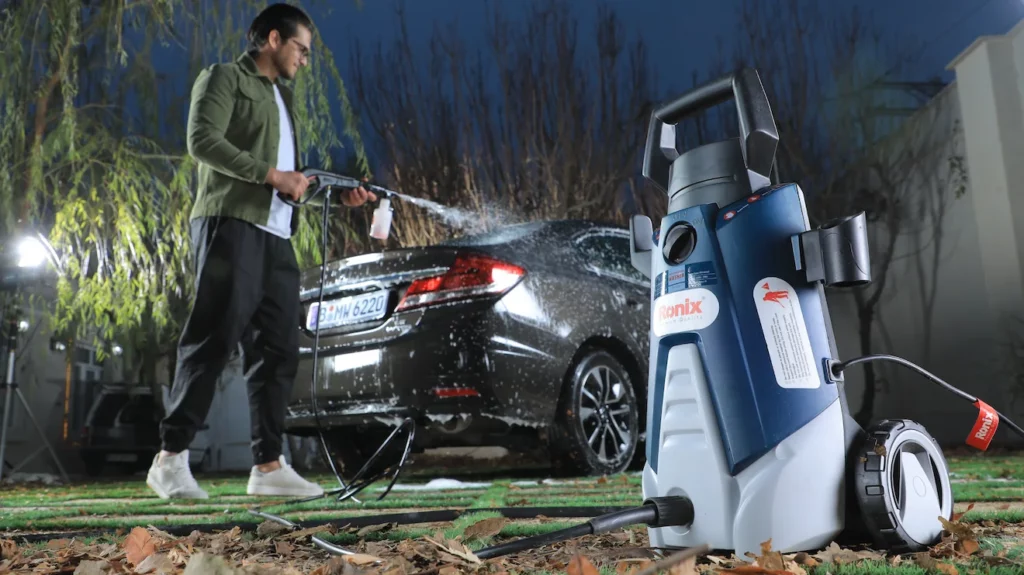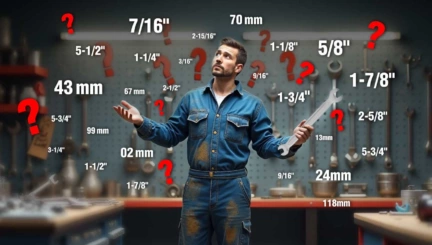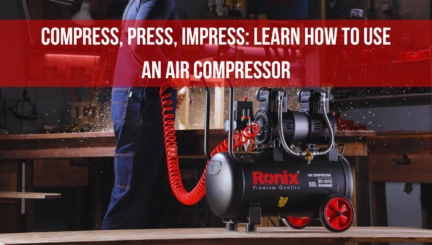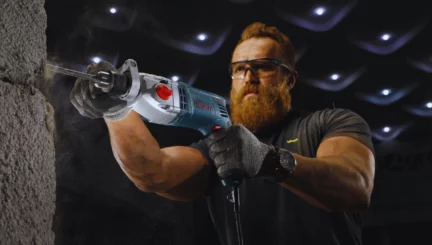- 16min
- 2809
- 0
Carwash guide
Have you ever noticed how different it feels to drive your car after it’s been washed? That applies both to the inside and outside of your car. Driving a clean car always brings a smile to the face. Especially if you love your car. You love your car, right? If you love your car then you might be one of those people who prefers to wash their car at home!
Although the idea of washing your car by yourself may not seem very pleasant, no real car lover goes to a carwash and leaves the car to the hands of a tired worker or machine. If you have the right equipment and can clean the exterior of your car by yourself, it can prolong the life of your car’s color, protect it, and avoid scratches while being washed.

So why not wash it at home when you can do it yourself? An hour, or less if you are fast, with the right equipment and processes can result in a shiny, lovely car. Here in this article, you can read our recommendations for properly cleaning your vehicle. Do not worry about the best way to wash a car at home, as this fact depends on your own needs and particular situation.
We will first talk about tools you will need for washing your car at home then talk about every step of the process that you will need to take. If you, like a lot of people in rural areas, lack access to a carwash, at home, you can obtain the required tools.

What to Wash Your Car with at Home
You have probably asked yourself “What can I use to wash my car at home?” The answer is difficult because of the many different situations that may arise for different people. If you want the most basic set of items for this task, these items are car wash soap, a bucket and grit guard, a wash mitt or a sponge, a hose with nozzle, microfiber towels, a wheel cleaner, a brush for wheels and tires, a glass cleaner, and a wax or a sealant. You will only need a subset of the equipment we just introduced for most cases but once you acquire these items you will have your own at-home carwash kit that you can use to easily wash your car.

The traditional methods that are used often are the bucket and sponge method and the hose method. If you want to wash your car more regularly, you can definitely benefit from using a pressure washer. A foam gun can also be a great addition to your arsenal of tools for washing your car at home.
Pressure washers are a great investment because these tools are extremely fast and efficient for washing cars at home and they also conserve a lot more water compared to buckets or hoses. Now that we have introduced the necessary items for washing your car at home. We think that this is the best way to wash cars at home.

Introducing a DIY Carwash Tool
In order to wash your car, you need proper tools. Having only a bucket won’t do it. Buying a Pressure Washer tool not only keeps your car protected, but also saves you some money. My suggestion to you is Ronix RP-U130 1600W High Pressure Washer. Its very fun to work with. Washing cars, walkways, floors, walls, cars, fences or even your barbeque becomes enjoyable when you start a Ronix RP-U130 High Pressure Washer and let it take care of the rest.
Related Article : Pressure Washer Uses
The powerful high-performance 1600 W universal motor is the core of your power tool pressure washer and it delivers a maximum water pressure of 130 Bar. For better functionality and more convenience, our RP-U130 is designed in a way to increase ergonomics and durability. The new design, high-pressure spray gun, 2 different lances (one adjustable and the other turbo), automatic hose connector, and the 5m, high-quality PVC pressure hose are just a part of this power tool’s new design features. The other most important features of this pressure washer are the “automatic total-stop system” and the “built-in thermal protector.”

How to Wash Your Car at Home
In this section, we will finally talk in detail about all the different steps you need to take to wash your car at home. Hopefully, we can guide you on your path to becoming a car-washing savant! But beware, your neighbors might call you up and ask you for a hand in washing their cars, after seeing you on your driveway beautifully polishing up that old hunk of metal! If you are into it, you can even start your own at-home car wash service business.
Preparations
The first thing you need to know for knowing how to wash a car at home is the preparatory steps. By touching your car’s paint, you risk scratching it. I want to minimize the risk. Take off every single piece of jewelry before starting. Wearing a T-shirt can be a good choice. Make the chemicals and towels and the buckets and the hose ready. You don’t want water to dry on the vehicle, especially if it’s hard water, and risk etching the paint.

Make two 5-gallon buckets ready, one for soapy water and one as a dirty rinse bucket with a grit guard at the bottom, so the dirt won’t make it back onto the paint.
Related Article : History of High-Pressure Washers
Wheels
It’s smart to wash the wheels first with a wheel cleaner to avoid water drying on the paint. In my experience, products from AMMO, Wizard’s, Meguiar’s and Griot’s Garage do the best job without possibly ruining wheel finishes.

Using a wheel brush––I like a foam brush with a removable microfiber sleeve so I can wash the sleeve for reuse––clean both the front face of the wheel and inside the wheel’s barrel.
Make sure to clean the dirt, brake dust, and debris from the wheel brush after each wheel (or mid-wheel depending on the level of dirt) in the dirty water bucket, then use the soapy water bucket to wet the wheel brush. Rinse each wheel after finishing.

Dump the water from the buckets and refill both (one just water and one soapy water) to wash the vehicle itself next.
Pre-clean
Remember, every time you touch your paint there’s a risk of scratching it as the dirt is moved. It’s essential to remove any and all large pieces of dirt and debris from the paint before touching it to minimize this risk.
Start by foaming the entire exterior of the vehicle with a foam gun or hand frother. This will allow the dirt to get wet and loosen from the surface. If the car is merely dusty or there is no running water available, use the hand frothers and hoseless wash solution as the wash itself. Skip right to the protect-and-finish step after wiping off the hoseless wash with a clean microfiber towel.

Most cars will need a full wash. I prefer using the Ronix RP-U130 1600W High-Pressure Washer, though with a caveat. Don’t use a 0-degree tip as that could damage the paint; I use a 40-degree nozzle for a wide spray. Rinse the foam and any loose, large dirt, pieces of debris, and or dust from the paint. Always use the best soap to wash your car at home, that is available to you.

Wash
The car is now wet and all major dirt and debris is cleared from the paint. Time to wash. Using a microfiber wash mitt and extremely sudsy water from the soap bucket, clean the vehicle using a side-to-side motion, never circular motions, at the roof, then windshield, and then hood, working your way down. After each panel or half panel, depending on the panel size (roofs are large, hoods are large), put the mitt into the “dirty water bucket” with the grit guard and use your hand to agitate it to get all the remaining dirt off the mitt.

Pull the mitt from the dirty water, squeeze all the remaining water off the mitt, then dunk the mitt into the soapy, sudsy bucket to get fresh water and suds on the mitt. Repeat the side-to-side wash motion on the next panel. Wash the vehicle from top to bottom, roof to lower sides, as vehicles are dirtiest at the lower third because that’s where dirt and debris are kicked up onto the paint.
Rinse
Now you know how to wash cars at home, but you don’t! You also need to know about rinsing and drying. Once the entire car, including the wheels, has been washed, it’s time for a final rinse. Using the pressure washer make sure to rinse all the soap off the vehicle from top to bottom.
Dry
An easy way to dry the vehicle is to use a leaf blower to get most of the water off the paint. For those without a leaf blower, it’s best to use soft, clean microfiber towels. A large “guzzler” towel that can absorb a lot of water makes the job quick and easy.

If a full detail isn’t on the to-do list after the wash, I recommend spraying a quick detailer. In my experience, Wizard’s and Griot’s Garage quick detailers seem to produce satisfying results while keeping things lubricated and protected as you dry the rest of the car.
Once most of the water has been dried off the vehicle it’s time to remove the hidden water. All the vehicle badging, door sills, gaskets, grilles, spoilers, and cladding retain water.

Use a hand-held blower (Pro tip: You can tell your spouse you need one of these to help dry your pet after a bath, if you happen to have a pet, to justify the expense) to blow all the hidden water from every nook, cranny, and crevice around the vehicle. You’ll be surprised how much hidden water is retained that will later drip out from its hiding spots and leave etched water spots on your paint.
At last
It’s a good idea to give the exterior––and interior––glass its dedicated cleaning to ensure a crystal clear, streak-free view. Use a clean microfiber towel (or high-end paper towel in a pinch, the cheap stuff leaves behind lint) with an ammonia-free glass cleaner such as Spray away Glass Cleaner or Stoner Glass Cleaner. Continue reading to read more tips about the best way to wash your car at home.
How often your vehicle needs to be washed will vary depending on factors such as location, weather, and lifestyle, but a bi-weekly or monthly cleaning will keep your car clean and protected. Now, go clean your car and make it lovely.

How to Wash a Car at Home Without a Hose
To wash a car at home without using hoses, you can use a bucket of water, a mild car wash soap, and a soft sponge or microfiber cloth. You can prepare a solution with soap and water, dunk your sponge into the sponge or cloth into the soapy solution, and gently wash the car’s exterior. Focus on one section of the car at a time.

All the other tips for washing a car at home still apply in this case. Use the right quality of water. Use the right type of detergent. Wipe away dirt and grime, and rinse the sponge or cloth in the bucket when you need. Finally, use a separate clean, damp cloth to wipe off any soap residue. This can leave the car clean without the need for a hose.
The Difference Between the Hose Method, the Sponge Method, and the Pressure Washer Method
There are a couple of differences that have to be mentioned when talking about different methods of washing such as the hose method, the sponge method, and the pressure washer method. In this section, we will tell you the differences between these methods of washing cars briefly.

Sponge Method
Pros
- Simple and cost-effective
- Less water consumption compared to the hose method
Cons
- May not be as effective at removing tough dirt and contaminants
Hose Method
Pros
- More effective than the sponge method at cleaning
- You can control the water flow
Cons
- May not be as effective as a pressure washer
- Water consumption is higher compared to the sponge method
Pressure Washer Method
Pros
- Extremely effective at removing dirt, grime, and other contaminants
- Saves time and effort compared to other methods
Cons
- More expensive, (if you don’t calculate the water bill in the long run, although our products are much more affordable)
How to Wash Car Seats at Home
Now that we have talked about washing the exterior of your car, let’s talk about how to wash the interior and the insides of your car at home. We will start with the seats.
For this task, you will first need a couple of items such as a Vacuum Cleaner, Soft Brushes and Cloths, Microfiber Towels, and a Car Seat Cleaner (Detergent). Depending on the material of your seats you will need a different type of detergent.
For fabric seats, you would need a solution of mild detergent and water or use a fabric cleaner. For leather seats, you would need a leather cleaner or a mixture of mild soap and water. For vinyl seats, a mild all-purpose cleaner or a vinegar-water solution will work perfectly.

The steps required for washing your car seats at home are as follows:
- First you need to remove loose debris such as loose dirt, crumbs, and any other type of debris from the seats. For this task, you can use a vacuum cleaner. You need to pay attention to the crevices and seams.
- After identifying the major stains on the car seat, you need to take note and target them with the right type of cleaner and apply it with the right method.
- Gently scrub the seats of your car. Always use a soft brush or cloth and be careful not to damage the material of your car seat. If any stain is hard to remove, then you need to use a special stain remover.
- The next step is rinsing or wiping your seats. This step is different depending on the type of detergent you use. Always use a clean and damp cloth. Make sure to remove any residue that is built up.
- Let your seats dry in the air. Remove your seats from the car if you can and put them outside to ensure they are in an environment with constant airflow.
- In case you use leather seats, you need to use conditioner after the drying process is finished.
How to Wash Car Mats at Home
Washing your car mats at home is extremely easy. You need to start by removing them from the vehicle. Use a vacuum first to eliminate loose dirt and debris. Depending on the material of your mats, you will either need to use a hose or pressure washer or use a mild detergent solution and scrub away all the stains and grime.
After you are done you can rinse thoroughly. Make sure all the soap or detergent is removed. Allow the mats to air dry completely before placing them back in your car. Whether it’s your mats or your seats, cleaning the interior parts of your car, makes you feel amazing every time you get in.
How to Wash Car Engine at Home
Washing your car engine at home might be tricky. It certainly requires you to know a lot about many different parts under the hood, but if you have already washed the exterior, the seats, and the mat at home, you might as well just do the engine too.
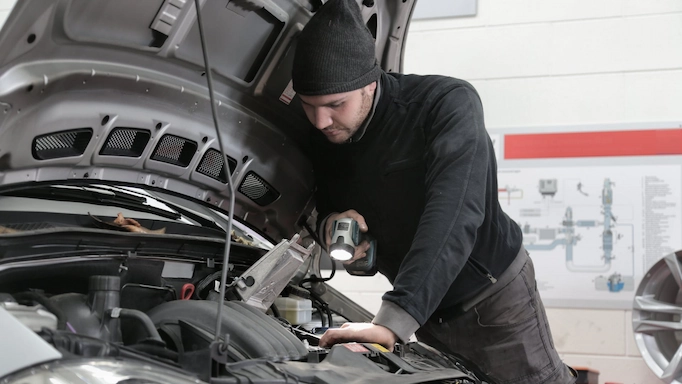
For this task, we don’t recommend using a pressure washer but if you ever do use a pressure washer for this task, make sure that you are not using high pressure and be extremely careful. Use low pressure, maintain a safe distance, avoid direct spraying, avoid sensitive parts like the computer, or the fuse box, and cover the sensitive parts if you can. Pay attention to seals and gaskets as high-pressure water can damage seals and gaskets. The issues we mentioned about pressure washers also apply to hoses.
You will need several tools to wash your car engine. These items include gloves and safety glasses, engine degreasers, plastic bags or wraps, brushes, hoses with a nozzle, towels, or rags. Car wax or protectant, plastic funnels or bags, buckets, and car wash mitts or sponges are optional but not necessary.

- To wash your car engine at home, you can start by ensuring that the engine is cool to the touch.
- Apply an engine degreaser evenly over the engine surfaces and make sure to use more of the degreaser on the dirtier and greasy parts. Allow it to sit for the recommended time according to the product’s instructions.
- You will need a variety of brushes, such as soft, medium, and stiff bristle brushes for scrubbing away the dirt and grease. Pay attention to the hard-to-reach areas.
- Rinse the engine thoroughly with a hose and nozzle and avoid the use of high-pressure water directly on sensitive components, until all the degreaser and loosened dirt are washed away.
- Inspect the engine to make sure that all the debris and degreaser have been removed. Use a towel or rag to dry the engine. Apply a layer of car wax or protectant on exposed metal surfaces for more protection.
How to Get a Spot-free Rinse When Washing Your Car at Home
The quality of the water is the most important thing that you need to worry about if you want a spot-free rinse when washing your car. The hardness of untouched municipal water is the main thing that causes spots on your car after washing. To achieve a spot-free rinse during a car wash at home, make sure that you use deionized water or a water softener to reduce mineral content.
After washing the car, you need to use a nozzle or a dedicated spot-free rinse solution with distilled or deionized water to avoid water spots. You can finish by gently patting the car dry with a clean, soft microfiber towel to prevent new water spots from forming after the water dries from the surface of the car.
FAQ:
Is it cheaper to wash your car at home?
The answer is in the long run yes. After a while, the money you have spent on tools and equipment, the detergent you have bought, and the water bill will be less than the money you would spend at a carwash.

Ronix
2 November 2020
